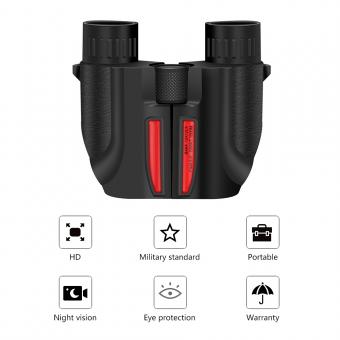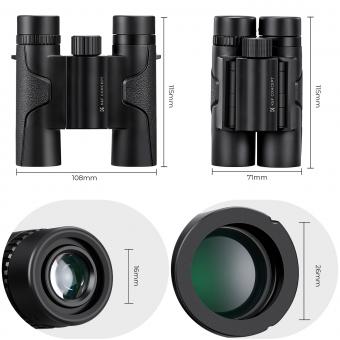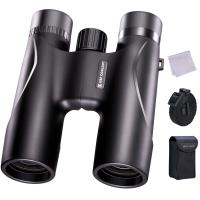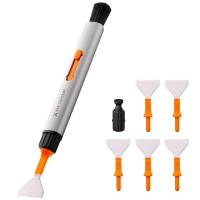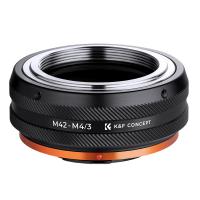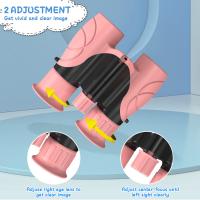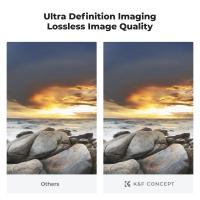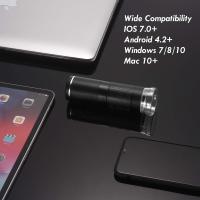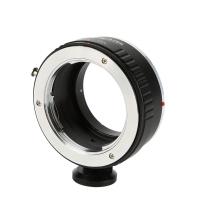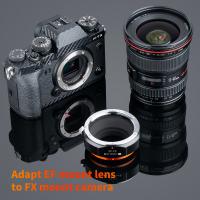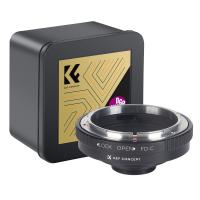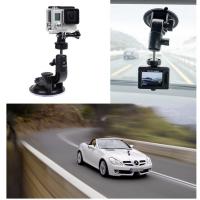What Should I Look For When Buying Binoculars ?
When buying binoculars, there are several factors to consider. First, determine the purpose for which you will be using them, such as birdwatching, stargazing, or sports events. Consider the magnification power, which affects how close the objects will appear. A higher magnification may result in a narrower field of view. The objective lens diameter is also important, as it determines the amount of light that enters the binoculars and affects the brightness of the image. Look for binoculars with a larger objective lens diameter for better low-light performance. Consider the size and weight of the binoculars, as well as the comfort of the grip and ease of focusing. Look for features like waterproofing and fog-proofing if you plan to use them in challenging weather conditions. Finally, consider your budget and choose binoculars that offer the best combination of features and quality within your price range.
1、 Magnification power
When buying binoculars, there are several factors to consider to ensure you make the right choice. One of the most important factors is the magnification power. Magnification power refers to how much closer the binoculars can make an object appear compared to the naked eye. It is usually denoted by a number followed by an "x" (e.g., 8x, 10x).
The magnification power you choose depends on your intended use. For general purposes such as birdwatching or wildlife observation, a magnification power of 8x or 10x is usually sufficient. Higher magnification, such as 12x or 16x, can provide more detail but may also result in a narrower field of view and shakier images due to increased hand movements.
It's important to note that higher magnification doesn't always mean better. In fact, excessively high magnification can make it difficult to maintain a steady image, especially without the aid of a tripod. Additionally, higher magnification can also amplify any hand movements, resulting in a shaky image.
In recent years, there has been a growing trend towards binoculars with image stabilization technology. These binoculars use gyroscopes or electronic sensors to compensate for hand movements, providing a more stable image even at higher magnifications. This can be particularly beneficial for activities like stargazing or marine observation, where higher magnification is often desired.
Ultimately, when buying binoculars, it's important to strike a balance between magnification power, image stability, and your specific needs. Consider factors such as the intended use, portability, and budget to make an informed decision.
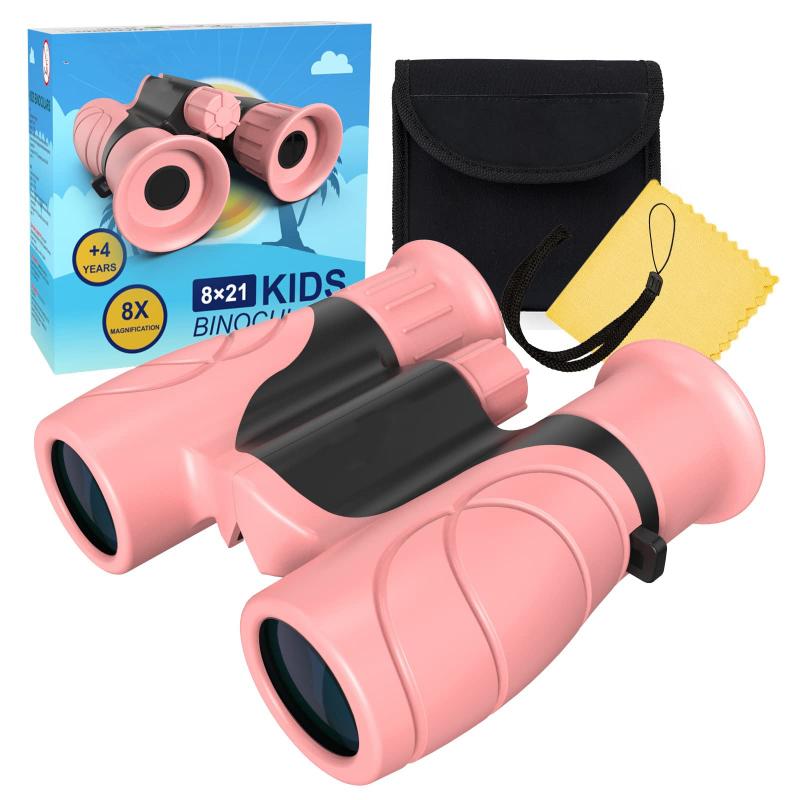
2、 Objective lens diameter
When buying binoculars, there are several factors to consider to ensure you make the right choice. One of the most important aspects to look for is the objective lens diameter. The objective lens is the larger lens at the front of the binoculars, and its diameter is measured in millimeters.
The objective lens diameter plays a crucial role in determining the amount of light that enters the binoculars. A larger objective lens diameter allows more light to enter, resulting in brighter and clearer images. This is particularly important in low-light conditions, such as during dawn or dusk, or when observing distant objects.
However, it is essential to strike a balance between the objective lens diameter and the overall size and weight of the binoculars. Larger objective lenses tend to make the binoculars bulkier and heavier, which may not be ideal for extended use or portability.
The latest point of view suggests that a good objective lens diameter for general use is around 42mm. This size provides a good balance between light-gathering capability and portability. However, if you plan to use the binoculars primarily for low-light conditions or astronomy, you may want to consider larger objective lenses, such as 50mm or even 56mm.
Additionally, it is worth considering the quality of the lenses themselves. Look for binoculars with high-quality glass and lens coatings, as these factors can greatly impact image clarity, color accuracy, and overall performance.
In conclusion, when buying binoculars, pay close attention to the objective lens diameter. Consider your specific needs, such as the lighting conditions and portability requirements, and aim for a size that strikes a balance between light-gathering capability and practicality.

3、 Field of view
When buying binoculars, there are several factors to consider to ensure you make the right choice. One important aspect to look for is the field of view. The field of view refers to the width of the area you can see through the binoculars at a specific distance. It is usually measured in degrees or feet at a certain distance.
A wider field of view allows you to see a larger area, making it easier to track moving objects or observe a broader scene. This is particularly important for activities such as birdwatching, wildlife observation, or sports events where you need to quickly locate and follow subjects. A wider field of view also enhances the overall viewing experience, providing a more immersive and natural feel.
However, it's important to note that a wider field of view often comes at the expense of magnification. Higher magnification binoculars tend to have a narrower field of view. Therefore, it's crucial to strike a balance between magnification and field of view based on your specific needs and preferences.
Additionally, advancements in technology have led to the development of binoculars with wider fields of view. Some manufacturers now offer binoculars with wide-angle or extra-wide-angle eyepieces, which provide an even broader field of view. These can be particularly beneficial for activities that require a wide panoramic view, such as landscape observation or astronomy.
In conclusion, when buying binoculars, it is important to consider the field of view. A wider field of view enhances your ability to observe and track subjects, providing a more enjoyable viewing experience. However, it's essential to find the right balance between field of view and magnification based on your specific needs.
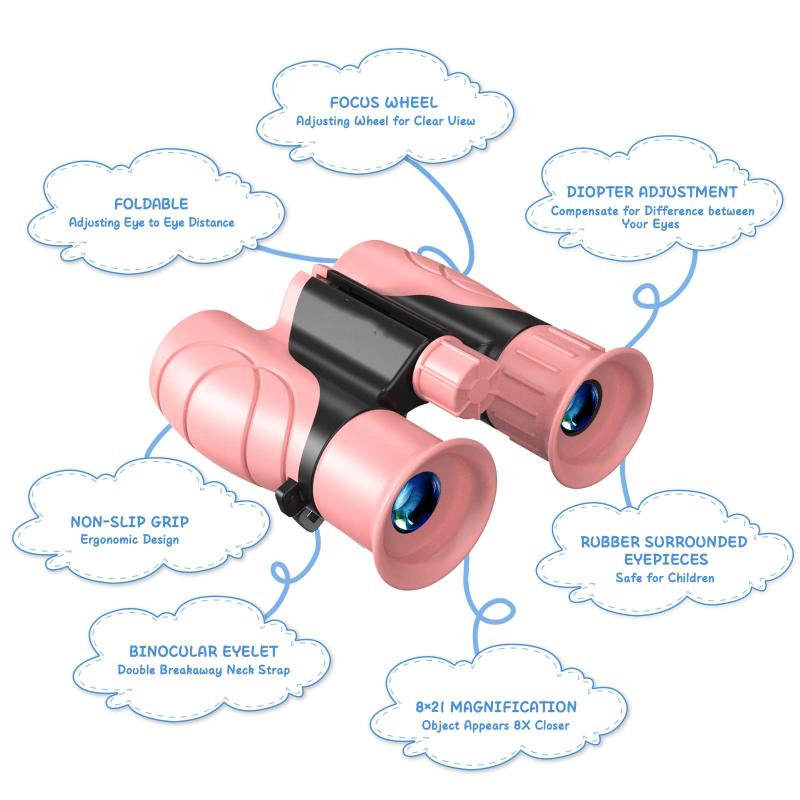
4、 Lens coating and quality
When buying binoculars, there are several factors to consider to ensure you make the right choice. One of the most important aspects to look for is lens coating and quality.
Lens coating plays a crucial role in enhancing the performance of binoculars. It helps to reduce glare and reflections, resulting in a clearer and sharper image. High-quality coatings can also improve light transmission, allowing for better visibility in low-light conditions. When examining binoculars, check for multiple layers of anti-reflective coatings on all lens surfaces. These coatings are typically labeled as fully multi-coated, multi-coated, or coated. Fully multi-coated lenses are considered the best as they provide the highest level of light transmission and image quality.
In terms of lens quality, look for binoculars with high-quality glass lenses. The type of glass used can greatly impact the clarity and color accuracy of the image. Extra-low dispersion (ED) glass is often preferred as it helps to minimize chromatic aberration, resulting in sharper and more vibrant images. Additionally, consider the size of the objective lens (the front lens) as larger lenses allow more light to enter, resulting in brighter images.
It is worth noting that advancements in technology have led to the development of new lens coatings and materials. For instance, some binoculars now feature phase correction coatings on the prisms, which help to improve image contrast and resolution. Additionally, there are binoculars with specialized coatings designed to repel water, oil, and dirt, making them easier to clean and maintain.
In conclusion, when buying binoculars, pay close attention to lens coating and quality. Look for multiple layers of anti-reflective coatings and high-quality glass lenses. Consider advancements in lens technology, such as phase correction coatings and specialized coatings for easier maintenance. By considering these factors, you can ensure that you choose binoculars that provide clear, sharp, and vibrant images for your viewing pleasure.













